Journal Description
Geomatics
Geomatics
is an international, peer-reviewed, open access journal on geomatic science published quarterly online by MDPI.
- Open Access— free for readers, with article processing charges (APC) paid by authors or their institutions.
- High Visibility: indexed within ESCI (Web of Science), Scopus, EBSCO, and other databases.
- Rapid Publication: manuscripts are peer-reviewed and a first decision is provided to authors approximately 22.1 days after submission; acceptance to publication is undertaken in 3.3 days (median values for papers published in this journal in the second half of 2024).
- Recognition of Reviewers: APC discount vouchers, optional signed peer review, and reviewer names published annually in the journal.
- Companion journal: Remote Sensing.
Latest Articles
Building Footprint Identification Using Remotely Sensed Images: A Compressed Sensing-Based Approach to Support Map Updating
Geomatics 2025, 5(1), 7; https://doi.org/10.3390/geomatics5010007 (registering DOI) - 31 Jan 2025
Abstract
Semantic segmentation of remotely sensed images for building footprint recognition has been extensively researched, and several supervised and unsupervised approaches have been presented and adopted. The capacity to do real-time mapping and precise segmentation on a significant scale while considering the intrinsic diversity
[...] Read more.
Semantic segmentation of remotely sensed images for building footprint recognition has been extensively researched, and several supervised and unsupervised approaches have been presented and adopted. The capacity to do real-time mapping and precise segmentation on a significant scale while considering the intrinsic diversity of the urban landscape in remotely sensed data has significant consequences. This study presents a novel approach for delineating building footprints by utilizing the compressed sensing and radial basis function technique. At the feature extraction stage, a small set of random features of the built-up areas is extracted from local image windows. The random features are used to train a radial basis neural network to perform building classification; thus, learning and classification are carried out in the compressed sensing domain. By virtue of its ability to represent characteristics in a reduced dimensional space, the scheme shows promise in being robust in the face of variability inherent in urban remotely sensed images. Through a comparison of the proposed method with numerous state-of-the-art approaches utilizing remotely sensed data of different spatial resolutions and building clutter, we establish its robustness and prove its viability. Accuracy assessment is performed for segmented footprints, and comparative analysis is carried out in terms of intersection over union, overall accuracy, precision, recall, and F1 score. The proposed method achieved scores of 93% in overall accuracy, 90.4% in intersection over union, and 91.1% in F1 score, even when dealing with drastically different image features. The results demonstrate that the proposed methodology yields substantial enhancements in classification accuracy and decreases in feature dimensionality.
Full article
Open AccessArticle
Analyzing Decadal Trends of Vegetation Cover in Djibouti Using Landsat and Open Data Cube
by
Julee Wardle and Zachary Phillips
Geomatics 2025, 5(1), 6; https://doi.org/10.3390/geomatics5010006 - 30 Jan 2025
Abstract
This study investigates decadal trends in vegetation cover in Djibouti from 1990 to 2020, addressing challenges related to its arid climate and limited resources. Using Digital Earth Africa’s Open Data Cube and thirty years of Landsat imagery, change detection algorithms, and statistical analysis,
[...] Read more.
This study investigates decadal trends in vegetation cover in Djibouti from 1990 to 2020, addressing challenges related to its arid climate and limited resources. Using Digital Earth Africa’s Open Data Cube and thirty years of Landsat imagery, change detection algorithms, and statistical analysis, this research explores vegetation dynamics at various spatial and temporal scales. Studies on change detection have advanced the field through exploring Landsat time series and diverse algorithms, but face limitations in handling data inconsistencies, integrating methods, and addressing practical and socio-environmental challenges. The results, obtained through change detection using NDVI differencing and Welch’s t-test, reveal significant trends in vegetation across Djibouti’s administrative and countrywide levels. Results show significant countrywide vegetative loss from 1990 to 2010, but recovery from 2010 to 2020, as evidenced by Welch’s t-test results. This disproved the Null Hypothesis of no trend and confirmed significant trends across all regions and resolutions analyzed. The findings provide important information for policymakers, land managers, and conservationists, providing awareness into patterns of Djibouti’s vegetation trends in the face of future climate change. The use of Open Data Cube and cloud computing enhances research capacity, allowing for the rapid and repeated analysis of larger time periods and geographical regions.
Full article
(This article belongs to the Topic Remote Sensing and Geoinformatics in Agriculture and Environment, 2nd Edition)
►▼
Show Figures
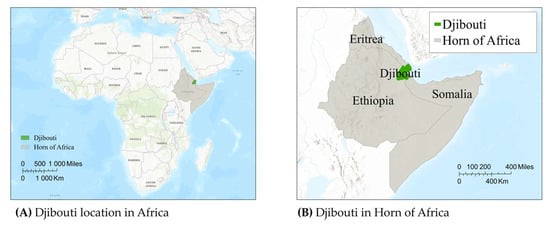
Figure 1
Open AccessArticle
Improving Bimonthly Landscape Monitoring in Morocco, North Africa, by Integrating Machine Learning with GRASS GIS
by
Polina Lemenkova
Geomatics 2025, 5(1), 5; https://doi.org/10.3390/geomatics5010005 - 20 Jan 2025
Abstract
►▼
Show Figures
This article presents the application of novel cartographic methods of vegetation mapping with a case study of the Rif Mountains, northern Morocco. The study area is notable for varied geomorphology and diverse landscapes. The methodology includes ML modules of GRASS GIS ‘r.learn.train’, ‘r.learn.predict’,
[...] Read more.
This article presents the application of novel cartographic methods of vegetation mapping with a case study of the Rif Mountains, northern Morocco. The study area is notable for varied geomorphology and diverse landscapes. The methodology includes ML modules of GRASS GIS ‘r.learn.train’, ‘r.learn.predict’, and ‘r.random’ with algorithms of supervised classification implemented from the Scikit-Learn libraries of Python. This approach provides a platform for processing spatiotemporal data and satellite image analysis. The objective is to determine the robustness of the “DecisionTreeClassifier” and “ExtraTreesClassifier” classification algorithms. The time series of satellite images covering northern Morocco consists of six Landsat scenes for 2023 with a bimonthly time interval. Land cover maps are produced based on the processed, classified, and analyzed images. The results demonstrated seasonal changes in vegetation and land cover types. The validation was performed using a land cover dataset from the Food and Agriculture Organization (FAO). This study contributes to environmental monitoring in North Africa using ML algorithms of satellite image processing. Using RS data combined with the powerful functionality of the GRASS GIS and FAO-derived datasets, the topographic variability, moderate-scale habitat heterogeneity, and bimonthly distribution of land cover types of northern Morocco in 2023 have been assessed for the first time.
Full article
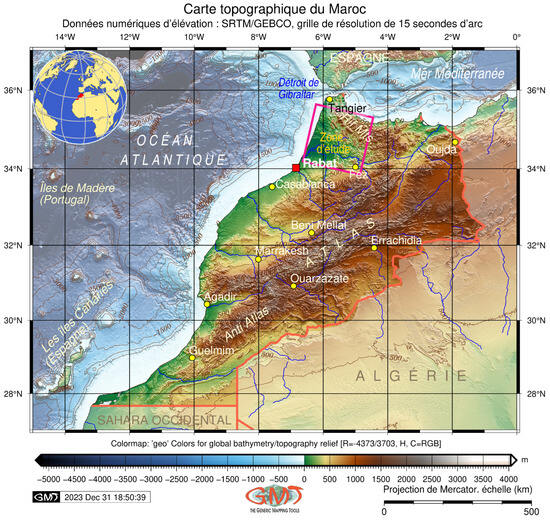
Figure 1
Open AccessArticle
Examining Deep Learning Pixel-Based Classification Algorithms for Mapping Weed Canopy Cover in Wheat Production Using Drone Data
by
Judith N. Oppong, Clement E. Akumu, Samuel Dennis and Stephanie Anyanwu
Geomatics 2025, 5(1), 4; https://doi.org/10.3390/geomatics5010004 - 10 Jan 2025
Abstract
Deep learning models offer valuable insights by leveraging large datasets, enabling precise and strategic decision-making essential for modern agriculture. Despite their potential, limited research has focused on the performance of pixel-based deep learning algorithms for detecting and mapping weed canopy cover. This study
[...] Read more.
Deep learning models offer valuable insights by leveraging large datasets, enabling precise and strategic decision-making essential for modern agriculture. Despite their potential, limited research has focused on the performance of pixel-based deep learning algorithms for detecting and mapping weed canopy cover. This study aims to evaluate the effectiveness of three neural network architectures—U-Net, DeepLabV3 (DLV3), and pyramid scene parsing network (PSPNet)—in mapping weed canopy cover in winter wheat. Drone data collected at the jointing and booting growth stages of winter wheat were used for the analysis. A supervised deep learning pixel classification methodology was adopted, and the models were tested on broadleaved weed species, winter wheat, and other weed species. The results show that PSPNet outperformed both U-Net and DLV3 in classification performance, with PSPNet achieving the highest overall mapping accuracy of 80%, followed by U-Net at 75% and DLV3 at 56.5%. These findings highlight the potential of pixel-based deep learning algorithms to enhance weed canopy mapping, enabling farmers to make more informed, site-specific weed management decisions, ultimately improving production and promoting sustainable agricultural practices.
Full article
(This article belongs to the Topic Geographic Information and Remote Sensing Technology (GIRST))
►▼
Show Figures
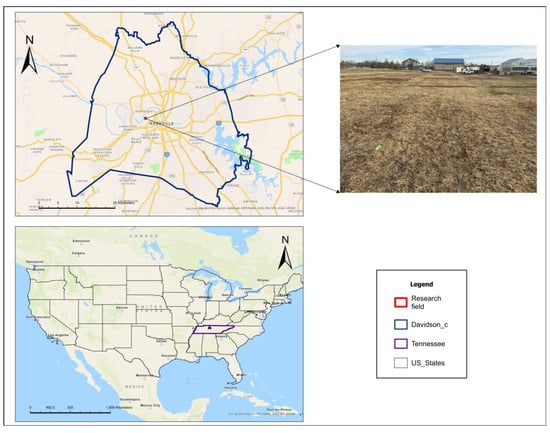
Figure 1
Open AccessArticle
Mapping Spatial Variability of Sugarcane Foliar Nitrogen, Phosphorus, Potassium and Chlorophyll Concentrations Using Remote Sensing
by
Ericka F. Picado, Kerin F. Romero and Muditha K. Heenkenda
Geomatics 2025, 5(1), 3; https://doi.org/10.3390/geomatics5010003 - 5 Jan 2025
Abstract
►▼
Show Figures
Various nutrients are needed during the sugarcane growing season for plant development and productivity. However, traditional methods for assessing nutritional status are often costly and time consuming. This study aimed to determine the level of nitrogen (N), phosphorus (P), potassium (K) and chlorophyll
[...] Read more.
Various nutrients are needed during the sugarcane growing season for plant development and productivity. However, traditional methods for assessing nutritional status are often costly and time consuming. This study aimed to determine the level of nitrogen (N), phosphorus (P), potassium (K) and chlorophyll of sugarcane plants using remote sensing. Remotely sensed images were obtained using a MicaSense RedEdge-P camera attached to a drone. Leaf chlorophyll content was measured in the field using an N-Tester chlorophyll meter, and leaf samples were collected and analyzed in the laboratory for N, P and K. The highest correlation between field samples and predictor variables (spectral bands, selected vegetation indices, and plant height from Light Detection and Ranging (LiDAR)), were noted.The spatial distribution of chlorophyll, N, P, and K maps achieved 60%, 75%, 96% and 50% accuracies, respectively. The spectral profiles helped to identify areas with visual differences. Spatial variability of nutrient maps confirmed that moisture presence leads to nitrogen and potassium deficiencies, excess phosphorus, and a reduction in vegetation density (93.82%) and height (2.09 m), compared to green, healthy vegetation (97.64% density and 3.11 m in height). This robust method of assessing foliar nutrients is repeatable for the same sugarcane variety at certain conditions and leads to sustainable agricultural practices in Costa Rica.
Full article
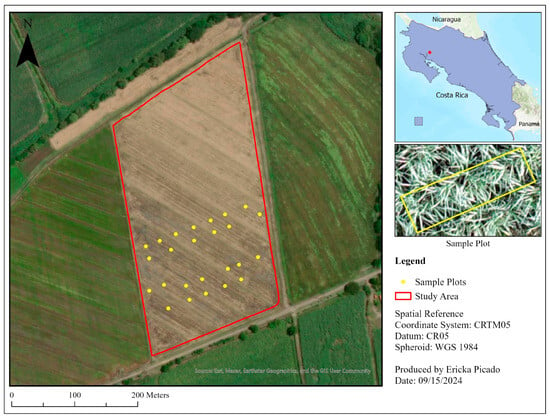
Figure 1
Open AccessArticle
Lessons Learned from the LBS2ITS Project—An Interdisciplinary Approach for Curricula Development in Geomatics Education
by
Günther Retscher, Jelena Gabela and Vassilis Gikas
Geomatics 2025, 5(1), 2; https://doi.org/10.3390/geomatics5010002 - 30 Dec 2024
Abstract
►▼
Show Figures
The LBS2ITS project, titled “Curricula Enrichment Delivered through the Application of Location-Based Services to Intelligent Transport Systems”, is a collaborative initiative funded by the Erasmus+ program of the European Union. The primary objectives of the project were twofold: to develop new curricula and
[...] Read more.
The LBS2ITS project, titled “Curricula Enrichment Delivered through the Application of Location-Based Services to Intelligent Transport Systems”, is a collaborative initiative funded by the Erasmus+ program of the European Union. The primary objectives of the project were twofold: to develop new curricula and modernize existing programs at four universities in Sri Lanka. This effort was driven by the need to align educational offerings with the rapidly evolving fields of Location-Based Services (LBSs) and Intelligent Transport Systems (ITSs). A key feature of the LBS2ITS project is its interdisciplinary approach, which draws on expertise from a range of academic disciplines. The project has successfully developed curricula that integrate diverse fields such as geomatics, cartography, transport engineering, urban planning, environmental engineering, and computer science. By blending these perspectives, the curricula provide students with a holistic understanding of LBSs and ITSs, preparing them to address complex, real-world challenges that span multiple sectors. In this paper, the curriculum development and modernization process is detailed, with a particular focus on the two key phases: teacher training and curriculum development. The teacher training phase was crucial in equipping educators with the skills and knowledge necessary to deliver the new and updated courses. This phase also provided an opportunity for teachers to familiarize themselves with the latest trends and technologies in LBSs and ITSs, ensuring that they could effectively convey this information to students. The development phase focused on the creation of the curriculum itself, ensuring that it met both academic standards and industry needs. The curriculum was designed to be flexible and responsive to emerging technologies and methodologies, allowing for continuous improvement and adaptation. Additionally, the paper delves into the theoretical frameworks underpinning the methodologies employed in the project. These include Problem-Based Learning (PBL) and Problem-Based e-Learning (PBeL), both of which encourage active student engagement and foster critical thinking by having students tackle real-world problems. The emphasis on PBL ensures that students not only acquire theoretical knowledge but also develop practical problem-solving skills applicable to their future careers in LBSs and ITSs. Furthermore, the project incorporated rigorous quality assurance (QA) mechanisms to ensure that the teaching methods and curriculum content met high standards. This included regular feedback loops, stakeholder involvement, and iterative refinement of course materials based on evaluations from both students and industry experts. These QA measures are essential for maintaining the relevance, effectiveness, and sustainability of the curricula over time. In summary, the LBS2ITS project represents a significant effort to enrich and modernize university curricula in Sri Lanka by integrating cutting-edge technologies and interdisciplinary approaches. Through a combination of innovative teaching methodologies, comprehensive teacher training, and robust quality assurance practices, the project aims to equip students with the skills and knowledge needed to excel in the fields of LBSs and ITSs.
Full article
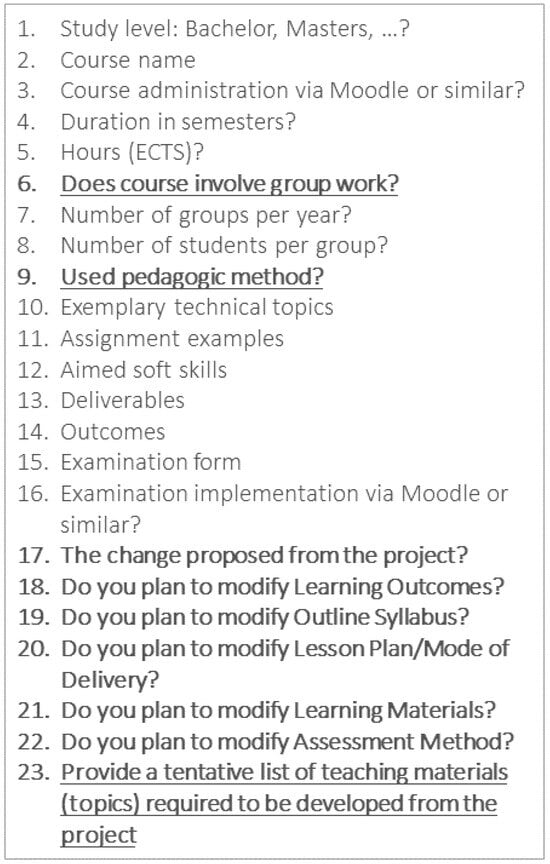
Figure 1
Open AccessArticle
Relationship Between Lithological and Morphometric Aspects of Mascasín Saline Watershed and Its Feeder Depositional Systems, San Juan and La Rioja Provinces, Argentina
by
Paula Santi Malnis and Luis Martin Rothis
Geomatics 2025, 5(1), 1; https://doi.org/10.3390/geomatics5010001 - 30 Dec 2024
Abstract
►▼
Show Figures
Understanding the relationships among watersheds and derived depositional products is critical to developing analog studies with the rock record, especially for continental intermontane basins. Also, it is crucial to study river flood occurrences. Multivariate statistics analysis allows for the comprehension of the relationship
[...] Read more.
Understanding the relationships among watersheds and derived depositional products is critical to developing analog studies with the rock record, especially for continental intermontane basins. Also, it is crucial to study river flood occurrences. Multivariate statistics analysis allows for the comprehension of the relationship among substrate, climate, and depositional products of the watersheds that feed the endorheic Mascasin Saline Basin, San Juan and La Rioja provinces, Argentina. Using a GIS platform, geomorphological, stratigraphic, morphometric, and structural analysis gave a dataset of variables for defining clusters. Under a similar climate, clustering analysis permits defining two main controls on watersheds and depositional products: parent rock composition and geological structures (faults and lineaments). The results underscore the critical role that lithology and structural controls play in basin morphometry and emphasize the need to quantify these variables for landscape evolution models.
Full article
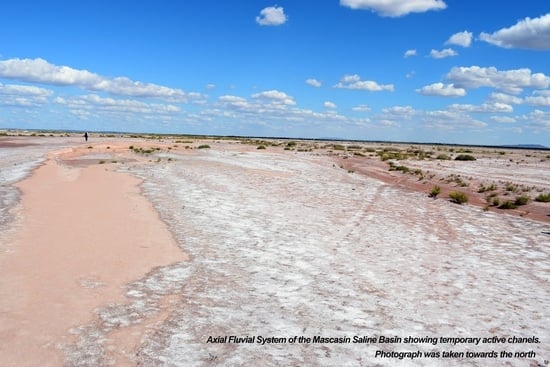
Graphical abstract
Open AccessEditorial
Advancements in Ocean Mapping and Nautical Cartography
by
Giuseppe Masetti, Ian Church, Anand Hiroji and Ove Andersen
Geomatics 2024, 4(4), 433-436; https://doi.org/10.3390/geomatics4040023 - 28 Nov 2024
Abstract
Ocean mapping and nautical cartography are foundational to understanding and managing marine environments [...]
Full article
(This article belongs to the Special Issue Advances in Ocean Mapping and Nautical Cartography)
Open AccessArticle
Deep Learning for Urban Tree Canopy Coverage Analysis: A Comparison and Case Study
by
Grayson R. Morgan, Danny Zlotnick, Luke North, Cade Smith and Lane Stevenson
Geomatics 2024, 4(4), 412-432; https://doi.org/10.3390/geomatics4040022 - 14 Nov 2024
Abstract
Urban tree canopy (UTC) coverage, or area, is an important metric for monitoring changes in UTC over large areas within a municipality. Several methods have been used to obtain these data, but remote sensing image classification is one of the fastest and most
[...] Read more.
Urban tree canopy (UTC) coverage, or area, is an important metric for monitoring changes in UTC over large areas within a municipality. Several methods have been used to obtain these data, but remote sensing image classification is one of the fastest and most reliable over large areas. However, most studies have tested only one or two classification methods to accomplish this while using costly satellite imagery or LiDAR data. This study seeks to compare three urban tree canopy cover classifiers by testing a deep learning U-Net convolutional neural network (CNN), support vector machine learning classifier (SVM) and a random forests machine learning classifier (RF) on cost-free 2012 aerial imagery over a small southern USA city and midsize, growing southern USA city. The results of the experiment are then used to decide the best classifier and apply it to more recent aerial imagery to determine canopy changes over a 10-year period. The changes are subsequently compared visually and statistically with recent urban heat maps derived from thermal Landsat 9 satellite data to compare the means of temperatures within areas of UTC loss and no change. The U-Net CNN classifier proved to provide the best overall accuracy for both cities (89.8% and 91.4%), while also requiring the most training and classification time. When compared spatially with city heat maps, city periphery regions were most impacted by substantial changes in UTC area as cities grow and the outer regions get warmer. Furthermore, areas of UTC loss had higher temperatures than those areas with no canopy change. The broader impacts of this study reach the urban forestry managers at the local, state/province, and national levels as they seek to provide data-driven decisions for policy makers.
Full article
(This article belongs to the Topic Geocomputation and Artificial Intelligence for Mapping)
►▼
Show Figures
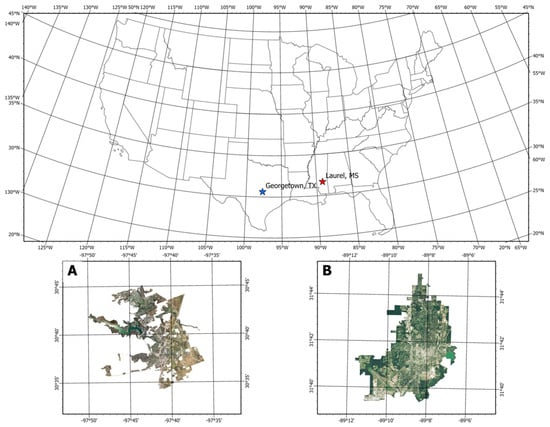
Figure 1
Open AccessArticle
Application of GIS in Introducing Community-Based Biogas Plants from Dairy Farm Waste: Potential of Renewable Energy for Rural Areas in Bangladesh
by
Kohinur Aktar, Helmut Yabar, Takeshi Mizunoya and Md. Monirul Islam
Geomatics 2024, 4(4), 384-411; https://doi.org/10.3390/geomatics4040021 - 6 Nov 2024
Abstract
►▼
Show Figures
Dairy production is one of the most important economic sectors in Bangladesh. However, the traditional management of dairy cow manure and other wastes results in air pollution, eutrophication of surface water, and soil contamination, highlighting the urgent need for more sustainable waste management
[...] Read more.
Dairy production is one of the most important economic sectors in Bangladesh. However, the traditional management of dairy cow manure and other wastes results in air pollution, eutrophication of surface water, and soil contamination, highlighting the urgent need for more sustainable waste management solutions. To address the environmental problems of dairy waste management, this research explored the potential of community-based biogas production from dairy cow manure in Bangladesh. This study proposed introducing community-based biogas plants using a geographic information system (GIS). The study first applied a restriction analysis to identify sensitive areas, followed by a suitability analysis to determine feasible locations for biogas plants, considering geographical, social, economic, and environmental factors. The final suitable areas were identified by combining the restriction and suitability maps. The spatial distribution of dairy farms was analyzed through a cluster analysis, identifying significant clusters for potential biogas production. A baseline and proposed scenario were designed for five clusters based on the input and output capacities of the biogas plants, estimating the location and capacity for each cluster. The study also calculated electricity generation from the proposed scenario and the net greenhouse gas (GHG) emissions reduction potential of the biogas plants. The findings provide a land-use framework for implementing biogas plants that considers environmental and socio-economic criteria. Five biogas plants were found to be technically and spatially feasible for electricity generation. These plants can collectively produce 31 million m3 of biogas annually, generating approximately 200.60 GWh of energy with a total electricity capacity of 9.8 MW/year in Bangladesh. Implementing these biogas plants is expected to increase renewable energy production by at least 1.25%. Furthermore, the total GHG emission reduction potential is estimated at 104.26 Gg/year CO2eq through the annual treatment of 61.38 thousand tons of dairy manure.
Full article
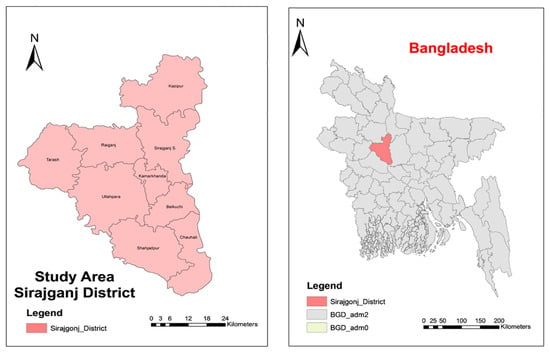
Figure 1
Open AccessEditorial
Advancing Geomatics: Innovation, Inclusivity, and Global Perspectives
by
Christophe Claramunt
Geomatics 2024, 4(4), 382-383; https://doi.org/10.3390/geomatics4040020 - 5 Oct 2024
Abstract
In the past few years since its launch, Geomatics has addressed various areas that form the core of the interdisciplinary field of geomatics [...]
Full article
Open AccessArticle
Spatiotemporal Analysis of Land Use and Land Cover Dynamics of Dinderesso and Peni Forests in Burkina Faso
by
Alphonse Maré David Millogo, Boalidioa Tankoano, Oblé Neya, Fousseni Folega, Kperkouma Wala, Kwame Oppong Hackman, Bernadin Namoano and Komlan Batawila
Geomatics 2024, 4(4), 362-381; https://doi.org/10.3390/geomatics4040019 - 4 Oct 2024
Abstract
►▼
Show Figures
The sustainable management of protected areas has increasingly become difficult due to the lack of updated information on land use and land cover transformations caused by anthropogenic pressures. This study investigates the spatiotemporal dynamics of the Dinderesso and Peni classified forests in Burkina
[...] Read more.
The sustainable management of protected areas has increasingly become difficult due to the lack of updated information on land use and land cover transformations caused by anthropogenic pressures. This study investigates the spatiotemporal dynamics of the Dinderesso and Peni classified forests in Burkina Faso from 1986 to 2022. First, a data driven method was adopted to investigate these forests degradation dynamics. Hence, relevant Landsat images data were collected, segmented, and analyzed using QGIS SCP plugin Random Forest algorithm. Ninety percent of the overall adjusted classification accuracies were obtained. The analysis also showed significant degradation and deforestation with high wooded vegetation classes such as clear forest and wooded savannah (i.e., tree savannah) converging to lower vegetation classes like shrub savannah and agroforestry parks. A second investigation carried out through surveys and field trips revealed key anthropogenic drivers including agricultural expansion, demographic pressure, bad management, wood cutting abuse, overexploitation, overgrazing, charcoal production, and bushfires. These findings highlight the critical need for better management to improve these protected areas.
Full article
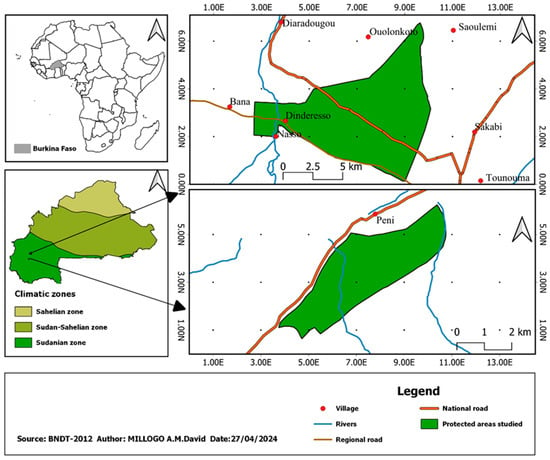
Figure 1
Open AccessArticle
Monitoring the Net Primary Productivity of Togo’s Ecosystems in Relation to Changes in Precipitation and Temperature
by
Badjaré Bilouktime, Folega Fousséni, Bawa Demirel Maza-esso, Liu Weiguo, Huang Hua Guo, Wala Kpérkouma and Batawila Komlan
Geomatics 2024, 4(3), 342-361; https://doi.org/10.3390/geomatics4030018 - 18 Sep 2024
Cited by 1
Abstract
►▼
Show Figures
Climate variability significantly impacts plant growth, making it crucial to monitor ecosystem performance for optimal carbon sequestration, especially in the context of rising atmospheric CO2 levels. Net Primary Productivity (NPP), which measures the net carbon flux between the atmosphere and plants, serves
[...] Read more.
Climate variability significantly impacts plant growth, making it crucial to monitor ecosystem performance for optimal carbon sequestration, especially in the context of rising atmospheric CO2 levels. Net Primary Productivity (NPP), which measures the net carbon flux between the atmosphere and plants, serves as a key indicator. This study uses the CASA (Carnegie–Ames–Stanford Approach) model, a radiation use efficiency method, to assess the spatio-temporal dynamics of NPP in Togo from 1987 to 2022 and its climatic drivers. The average annual NPP over 36 years is 4565.31 Kg C ha−1, with notable extremes in 2017 (6312.26 Kg C ha−1) and 1996 (3394.29 Kg C ha−1). Productivity in natural formations increased between 2000 and 2022. While climate change and land use negatively affect Total Production (PT) from 2000 to 2022, they individually enhance NPP variation (58.28% and 188.63%, respectively). NPP shows a strong positive correlation with light use efficiency (r2 = 0.75) and a moderate one with actual evapotranspiration (r2 = 0.43). Precipitation and potential evapotranspiration have weaker correlations (r2 = 0.20; 0.10), and temperature shows almost none (r2 = 0.05). These findings contribute to understanding ecosystem performance, supporting Togo’s climate commitments.
Full article
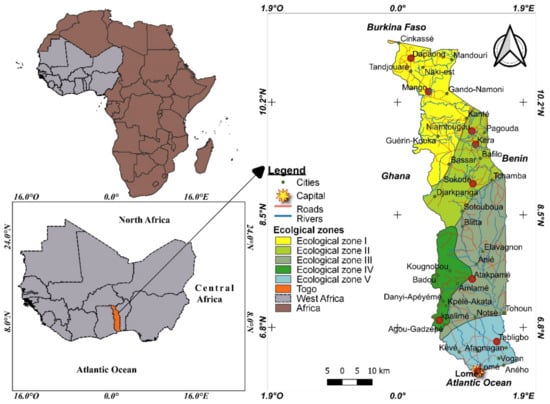
Figure 1
Open AccessArticle
Roles of Earth’s Albedo Variations and Top-of-the-Atmosphere Energy Imbalance in Recent Warming: New Insights from Satellite and Surface Observations
by
Ned Nikolov and Karl F. Zeller
Geomatics 2024, 4(3), 311-341; https://doi.org/10.3390/geomatics4030017 - 20 Aug 2024
Abstract
►▼
Show Figures
Past studies have reported a decreasing planetary albedo and an increasing absorption of solar radiation by Earth since the early 1980s, and especially since 2000. This should have contributed to the observed surface warming. However, the magnitude of such solar contribution is presently
[...] Read more.
Past studies have reported a decreasing planetary albedo and an increasing absorption of solar radiation by Earth since the early 1980s, and especially since 2000. This should have contributed to the observed surface warming. However, the magnitude of such solar contribution is presently unknown, and the question of whether or not an enhanced uptake of shortwave energy by the planet represents positive feedback to an initial warming induced by rising greenhouse-gas concentrations has not conclusively been answered. The IPCC 6th Assessment Report also did not properly assess this issue. Here, we quantify the effect of the observed albedo decrease on Earth’s Global Surface Air Temperature (GSAT) since 2000 using measurements by the Clouds and the Earth’s Radiant Energy System (CERES) project and a novel climate-sensitivity model derived from independent NASA planetary data by employing objective rules of calculus. Our analysis revealed that the observed decrease of planetary albedo along with reported variations of the Total Solar Irradiance (TSI) explain 100% of the global warming trend and 83% of the GSAT interannual variability as documented by six satellite- and ground-based monitoring systems over the past 24 years. Changes in Earth’s cloud albedo emerged as the dominant driver of GSAT, while TSI only played a marginal role. The new climate sensitivity model also helped us analyze the physical nature of the Earth’s Energy Imbalance (EEI) calculated as a difference between absorbed shortwave and outgoing longwave radiation at the top of the atmosphere. Observations and model calculations revealed that EEI results from a quasi-adiabatic attenuation of surface energy fluxes traveling through a field of decreasing air pressure with altitude. In other words, the adiabatic dissipation of thermal kinetic energy in ascending air parcels gives rise to an apparent EEI, which does not represent “heat trapping” by increasing atmospheric greenhouse gases as currently assumed. We provide numerical evidence that the observed EEI has been misinterpreted as a source of energy gain by the Earth system on multidecadal time scales.
Full article
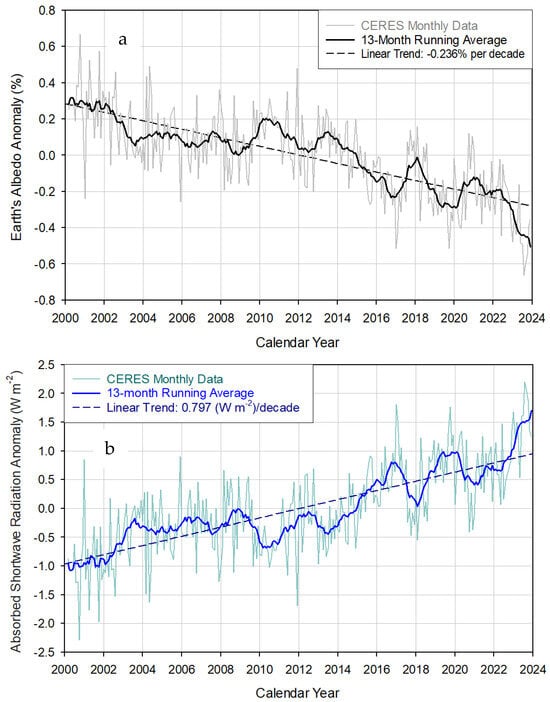
Figure 1
Open AccessArticle
Conditional Feature Selection: Evaluating Model Averaging When Selecting Features with Shapley Values
by
Florian Huber and Volker Steinhage
Geomatics 2024, 4(3), 286-310; https://doi.org/10.3390/geomatics4030016 - 8 Aug 2024
Cited by 1
Abstract
►▼
Show Figures
In the field of geomatics, artificial intelligence (AI) and especially machine learning (ML) are rapidly transforming the field of geomatics with respect to collecting, managing, and analyzing spatial data. Feature selection as a building block in ML is crucial because it directly impacts
[...] Read more.
In the field of geomatics, artificial intelligence (AI) and especially machine learning (ML) are rapidly transforming the field of geomatics with respect to collecting, managing, and analyzing spatial data. Feature selection as a building block in ML is crucial because it directly impacts the performance and predictive power of a model by selecting the most critical variables and eliminating the redundant and irrelevant ones. Random forests have now been used for decades and allow for building models with high accuracy. However, finding the most expressive features from the dataset by selecting the most important features within random forests is still a challenging question. The often-used internal Gini importances of random forests are based on the amount of training examples that are divided by a feature but fail to acknowledge the magnitude of change in the target variable, leading to suboptimal selections. Shapley values are an established and unified framework for feature attribution, i.e., specifying how much each feature in a trained ML model contributes to the predictions for a given instance. Previous studies highlight the effectiveness of Shapley values for feature selection in real-world applications, while other research emphasizes certain theoretical limitations. This study provides an application-driven discussion of Shapley values for feature selection by first proposing four necessary conditions for a successful feature selection with Shapley values that are extracted from a multitude of critical research in the field. Given these valuable conditions, Shapley value feature selection is nevertheless a model averaging procedure by definition, where unimportant features can alter the final selection. Therefore, we additionally present Conditional Feature Selection (CFS) as a novel algorithm for performing feature selection that mitigates this problem and use it to evaluate the impact of model averaging in several real-world examples, covering the use of ML in geomatics. The results of this study show Shapley values as a good measure for feature selection when compared with Gini feature importances on four real-world examples, improving the RMSE by 5% when averaged over selections of all possible subset sizes. An even better selection can be achieved by CFS, improving on the Gini selection by approximately 7.5% in terms of RMSE. For random forests, Shapley value calculation can be performed in polynomial time, offering an advantage over the exponential runtime of CFS, building a trade-off to the lost accuracy in feature selection due to model averaging.
Full article
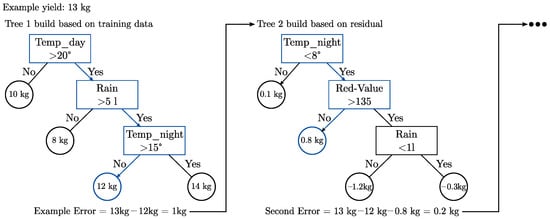
Figure 1
Open AccessTechnical Note
Transformation of a Classified Image from Pixel Clutter to Land Cover Map Using Geometric Generalization and Thematic Self-Enrichment
by
Geir-Harald Strand, Eva Solbjørg Flo Heggem, Linda Aune-Lundberg, Agata Hościło and Adam Waśniewski
Geomatics 2024, 4(3), 271-285; https://doi.org/10.3390/geomatics4030015 - 29 Jul 2024
Abstract
►▼
Show Figures
Land cover maps are frequently produced via the classification of satellite imagery. There is a need for a practicable and automated approach for the generalization of these land cover classification results into scalable, digital maps while minimizing information loss. We demonstrate a method
[...] Read more.
Land cover maps are frequently produced via the classification of satellite imagery. There is a need for a practicable and automated approach for the generalization of these land cover classification results into scalable, digital maps while minimizing information loss. We demonstrate a method where a land cover raster map produced using the classification of Sentinel 2 imagery was generalized to obtain a simpler, more readable land cover map. A replicable procedure following a formal generalization framework was applied. The result of the initial land cover classification was separated into binary layers representing each land cover class. Each binary layer was simplified via structural generalization. The resulting images were merged to create a new, simplified land cover map. This map was enriched by adding statistical information from the original land cover classification result, describing the internal land cover distribution inside each polygon. This enrichment preserved the original statistical information from the classified image and provided an environment for more complex cartography and analysis. The overall accuracy of the generalized map was compared to the accuracy of the original, classified land cover. The accuracy of the land cover classification in the two products was not significantly different, showing that the accuracy did not deteriorate because of the generalization.
Full article

Figure 1
Open AccessArticle
Urban Planning with Rational Green Infrastructure Placement Using a Critical Area Detection Method
by
Herath Mudiyanselage Malhamige Sonali Dinesha Herath, Takeshi Fujino and Mudalige Don Hiranya Jayasanka Senavirathna
Geomatics 2024, 4(3), 253-270; https://doi.org/10.3390/geomatics4030014 - 5 Jul 2024
Abstract
In an era of intense urban development and climate extremes, green infrastructure (GI) has become crucial for creating sustainable, livable, and resilient cities. However, the efficacy of GI is frequently undermined by haphazard implementation and resource misallocation that disregards appropriate spatial scales. This
[...] Read more.
In an era of intense urban development and climate extremes, green infrastructure (GI) has become crucial for creating sustainable, livable, and resilient cities. However, the efficacy of GI is frequently undermined by haphazard implementation and resource misallocation that disregards appropriate spatial scales. This study develops a geographic information system (GIS)-based critical area detection model (CADM) to identify priority areas for the strategic placement of GI, incorporating four main indices—spatial form, green cover, gray cover, and land use change—and utilizing the digital elevation model (DEM), normalized difference vegetation index (NDVI), urban density index (UDI), and up-to-date land use data. By employing the developed method, the study successfully locates priority zones for GI implementation in Saitama City, Japan, effectively pinpointing areas that require immediate attention. This approach not only guarantees efficient resource allocation and maximizes the multifunctional benefits of GI but also highlights the importance of a flexible, all-encompassing GI network to address urbanization and environmental challenges. The findings offer policymakers a powerful tool with which to optimize GI placement, enhancing urban resilience and supporting sustainable development.
Full article
(This article belongs to the Topic Spatial Decision Support Systems for Urban Sustainability)
►▼
Show Figures
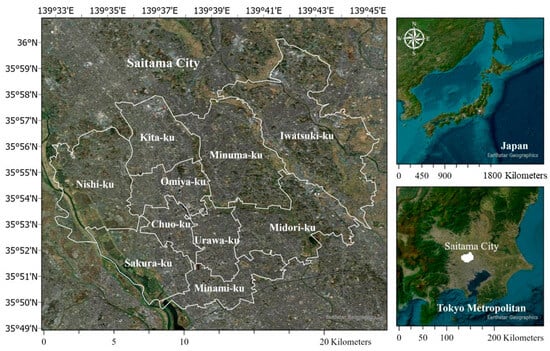
Figure 1
Open AccessArticle
Classification of Coastal Benthic Substrates Using Supervised and Unsupervised Machine Learning Models on North Shore of the St. Lawrence Maritime Estuary (Canada)
by
Guillaume Labbé-Morissette, Théau Leclercq, Patrick Charron-Morneau, Dominic Gonthier, Dany Doiron, Mohamed-Ali Chouaer and Dominic Ndeh Munang
Geomatics 2024, 4(3), 237-252; https://doi.org/10.3390/geomatics4030013 - 30 Jun 2024
Cited by 2
Abstract
Classification of benthic substrates is a core necessity in many scientific fields like biology, ecology, or geology, with applications branching out to a variety of industries, from fisheries to oil and gas. In the first part, a comparative analysis of supervised learning algorithms
[...] Read more.
Classification of benthic substrates is a core necessity in many scientific fields like biology, ecology, or geology, with applications branching out to a variety of industries, from fisheries to oil and gas. In the first part, a comparative analysis of supervised learning algorithms has been conducted using geomorphometric features to generate benthic substrate maps of the coastal regions of the North Shore of Quebec in order to establish a quantitative assessment of performance to serve as a benchmark. In the second part, a new method using Gaussian mixture models is showcased on the same dataset. Finally, a side-by-side comparison of both methods is featured to provide a qualitative assessment of the new algorithm’s ability to match human intuition.
Full article
(This article belongs to the Special Issue Advances in Ocean Mapping and Nautical Cartography)
►▼
Show Figures
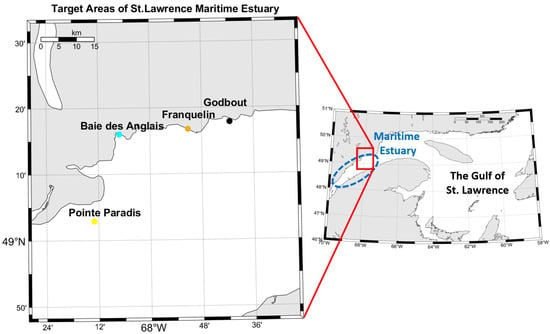
Figure 1
Open AccessArticle
Assessing Maize Yield Spatiotemporal Variability Using Unmanned Aerial Vehicles and Machine Learning
by
Colette de Villiers, Zinhle Mashaba-Munghemezulu, Cilence Munghemezulu, George J. Chirima and Solomon G. Tesfamichael
Geomatics 2024, 4(3), 213-236; https://doi.org/10.3390/geomatics4030012 - 28 Jun 2024
Cited by 3
Abstract
►▼
Show Figures
Optimizing the prediction of maize (Zea mays L.) yields in smallholder farming systems enhances crop management and thus contributes to reducing hunger and achieving one of the Sustainable Development Goals (SDG 2—zero hunger). This research investigated the capability of unmanned aerial vehicle
[...] Read more.
Optimizing the prediction of maize (Zea mays L.) yields in smallholder farming systems enhances crop management and thus contributes to reducing hunger and achieving one of the Sustainable Development Goals (SDG 2—zero hunger). This research investigated the capability of unmanned aerial vehicle (UAV)-derived data and machine learning algorithms to estimate maize yield and evaluate its spatiotemporal variability through the phenological cycle of the crop in Bronkhorstspruit, South Africa, where UAV data collection took over four dates (pre-flowering, flowering, grain filling, and maturity). The five spectral bands (red, green, blue, near-infrared, and red-edge) of the UAV data, vegetation indices, and grey-level co-occurrence matrix textural features were computed from the bands. Feature selection relied on the correlation between these features and the measured maize yield to estimate maize yield at each growth period. Crop yield prediction was then conducted using our machine learning (ML) regression models, including Random Forest, Gradient Boosting (GradBoost), Categorical Boosting, and Extreme Gradient Boosting. The GradBoost regression showed the best overall model accuracy with R2 ranging from 0.05 to 0.67 and root mean square error from 1.93 to 2.9 t/ha. The yield variability across the growing season indicated that overall higher yield values were predicted in the grain-filling and mature growth stages for both maize fields. An analysis of variance using Welch’s test indicated statistically significant differences in maize yields from the pre-flowering to mature growing stages of the crop (p-value < 0.01). These findings show the utility of UAV data and advanced modelling in detecting yield variations across space and time within smallholder farming environments. Assessing the spatiotemporal variability of maize yields in such environments accurately and timely improves decision-making, essential for ensuring sustainable crop production.
Full article
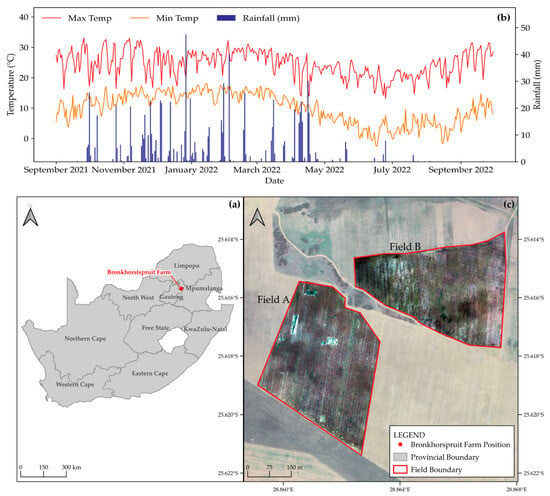
Figure 1
Open AccessReview
The Concept of Lineaments in Geological Structural Analysis; Principles and Methods: A Review Based on Examples from Norway
by
Roy H. Gabrielsen and Odleiv Olesen
Geomatics 2024, 4(2), 189-212; https://doi.org/10.3390/geomatics4020011 - 18 Jun 2024
Abstract
►▼
Show Figures
Application of lineament analysis in structural geology gained renewed interest when remote sensing data and technology became available through dedicated Earth observation satellites like Landsat in 1972. Lineament data have since been widely used in general structural investigations and resource and geohazard studies.
[...] Read more.
Application of lineament analysis in structural geology gained renewed interest when remote sensing data and technology became available through dedicated Earth observation satellites like Landsat in 1972. Lineament data have since been widely used in general structural investigations and resource and geohazard studies. The present contribution argues that lineament analysis remains a useful tool in structural geology research both at the regional and local scales. However, the traditional “lineament study” is only one of several methods. It is argued here that structural and lineament remote sensing studies can be separated into four distinct strategies or approaches. The general analyzing approach includes general structural analysis and identification of foliation patterns and composite structural units (mega-units). The general approach is routinely used by most geologists in preparation for field work, and it is argued that at least parts of this should be performed manually by staff who will participate in the field activity. We argue that this approach should be a cyclic process so that the lineament database is continuously revised by the integration of data acquired by field data and supplementary data sets, like geophysical geochronological data. To ensure that general geological (field) knowledge is not neglected, it is our experience that at least a part of this type of analysis should be performed manually. The statistical approach conforms with what most geologists would regard as “lineament analysis” and is based on statistical scrutiny of the available lineament data with the aim of identifying zones of an enhanced (or subdued) lineament density. It would commonly predict the general geometric characteristics and classification of individual lineaments or groups of lineaments. Due to efficiency, capacity, consistency of interpretation methods, interpretation and statistical handling, this interpretative approach may most conveniently be performed through the use of automatized methods, namely by applying algorithms for pattern recognition and machine learning. The focused and dynamic approaches focus on specified lineaments or faults and commonly include a full structural geological analysis and data acquired from field work. It is emphasized that geophysical (potential field) data should be utilized in lineament analysis wherever available in all approaches. Furthermore, great care should be taken in the construction of the database, which should be tailored for this kind of study. The database should have a 3D or even 4D capacity and be object-oriented and designed to absorb different (and even unforeseen) data types on all scales. It should also be designed to interface with shifting modeling tools and other databases. Studies of the Norwegian mainland have utilized most of these strategies in lineament studies on different scales. It is concluded that lineament studies have revealed fracture and fault systems and the geometric relations between them, which would have remained unknown without application of remote sensing data and lineament analysis.
Full article
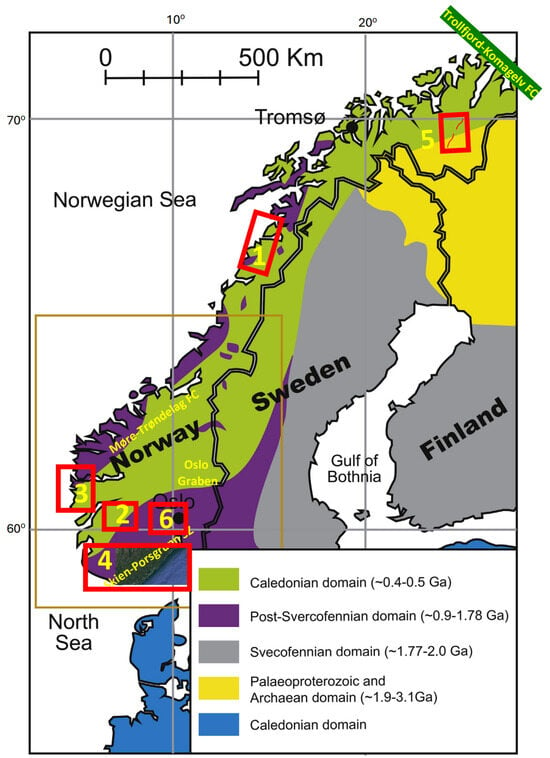
Figure 1
Highly Accessed Articles
Latest Books
E-Mail Alert
News
Topics
Topic in
Remote Sensing, Sensors, Smart Cities, Vehicles, Geomatics
Information Sensing Technology for Intelligent/Driverless Vehicle, 2nd Edition
Topic Editors: Yan Huang, Yi Ren, Penghui Huang, Jun Wan, Zhanye Chen, Shiyang TangDeadline: 31 May 2025
Topic in
Electronics, Geomatics, Remote Sensing, Sensors, Smart Cities, Technologies
Smartphone Positioning, Navigation and Timing: Advances and Challenges
Topic Editors: Vincenzo Capuano, Fabio DovisDeadline: 31 August 2025
Topic in
Forests, Geomatics, Remote Sensing, Sensors
Vegetation Characterization and Classification With Multi-Source Remote Sensing Data
Topic Editors: Baoxin Hu, Linhai JingDeadline: 30 September 2025
Topic in
Geosciences, Minerals, Geomatics
Future Trends in Mapping Potential Zones of Critical Minerals Using Advanced Imagery Techniques
Topic Editors: Amin Beiranvand Pour, Mazlan Hashim, Shojaeddin Niroomand, Basem Zoheir, Jong Kuk Hong, Hojjatollah RanjbarDeadline: 31 October 2025

Conferences
Special Issues
Special Issue in
Geomatics
Advances in Ocean Mapping and Hydrospatial Applications
Guest Editors: Anand Hiroji, Ian Church, Giuseppe MasettiDeadline: 31 July 2025
Special Issue in
Geomatics
Open-Source Geoinformation Software Tools in Environmental Modelling
Guest Editors: George P. Petropoulos, Prashant Srivastava, Daniela Silva-FuzzoDeadline: 31 July 2025











